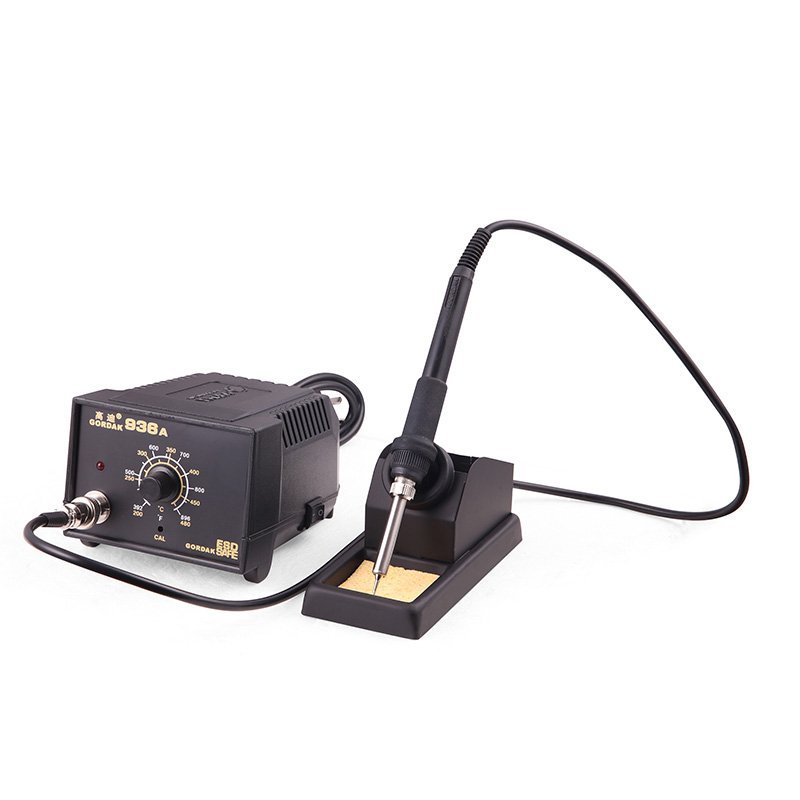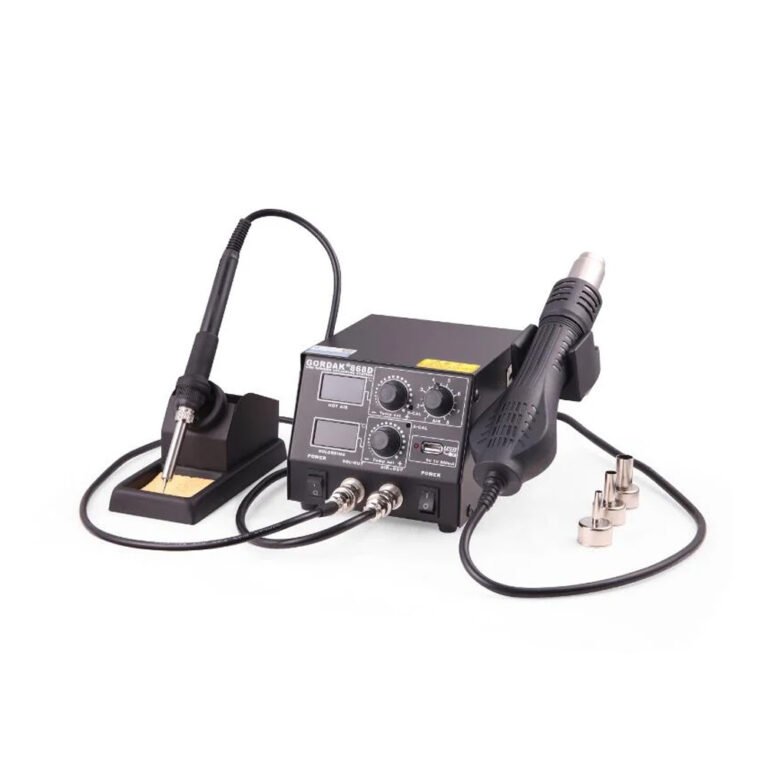Surface-mount devices (SMDs) are widely used in modern electronics because they allow for compact, efficient circuit designs. Unlike traditional through-hole components, SMDs are soldered directly onto the surface of a PCB, which requires precision and proper technique. This guide introduces beginners to essential SMD soldering methods, tools, and tips to ensure clean, reliable connections.
Essential Tools for SMD Soldering
Before you start, make sure you have the right equipment:
- Soldering Station with Fine Tips – Temperature control and small, precise tips are essential for tiny SMD pads.
- Solder Wire and Flux – Thin, flux-core solder works best for small joints.
- Tweezers – Fine-point tweezers help position and hold components.
- Hot Air Rework Station – Ideal for soldering or desoldering SMD ICs and components.
- Magnification Tools – A magnifying lamp or microscope helps you see fine-pitch components.
- PCB Holder – Keeps your board stable during soldering.

Key SMD Soldering Techniques
1. Hand Soldering
- Apply flux to the pads.
- Position the component with tweezers.
- Heat one pad with the soldering iron and tack down the component.
- Solder the remaining pads while ensuring minimal solder bridges.
2. Drag Soldering
- Useful for ICs with multiple pins in a row.
- Apply flux along the pin row.
- Use a fine chisel tip to drag a small amount of solder across the pins, forming connections simultaneously.
- Remove solder bridges with solder wick if needed.
3. Hot Air Reflow Soldering
- Apply solder paste to the pads.
- Position components accurately.
- Use a hot air rework station to evenly heat the area until solder melts and flows.
- Allows for precise, consistent results on multiple small components.
4. Rework and Repairs
- Use a hot air station or solder wick to remove defective SMDs.
- Clean the pads thoroughly before placing a new component.
Tips for Successful SMD Soldering
- Always work in a well-lit area with magnification for accuracy.
- Use steady hands and consider resting your wrist on the table.
- Apply flux generously to improve solder flow and reduce cold joints.
- Practice on scrap boards before attempting critical projects.
- Avoid excessive heat that can damage components or lift PCB pads.
Final Thoughts
SMD soldering may seem daunting at first, but with practice, the right tools, and proper technique, it becomes manageable. Mastering these methods will allow you to work on compact, high-density PCBs with confidence and precision.
About GORDAK
Gordak is a leading manufacturer of soldering and rework equipment, providing high-quality, reliable, and innovative tools for electronics professionals worldwide. With over 30 years of industry experience, Gordak combines advanced technology, precise temperature control, and ESD-safe designs to meet the needs of SMD and through-hole soldering applications. Committed to excellence, Gordak offers affordable solutions, responsive customer support, and products trusted by clients across the globe.
Soldering Basics & Tutorials
A Step-by-Step Guide to the Soldering Process
An Introduction to SMD Soldering Techniques
A Beginner’s Guide to SMD Soldering
DIY PCB Soldering: Tools, Tips, and Techniques
How to Use a Soldering Iron – A Beginner’s Guide
Essential Tools and Supplies for Soldering Beginners
Essential Electronics Soldering Tips and Tricks for Beginners
Essential Tools for Soldering Circuit Boards
The Importance of Soldering in Electronics



